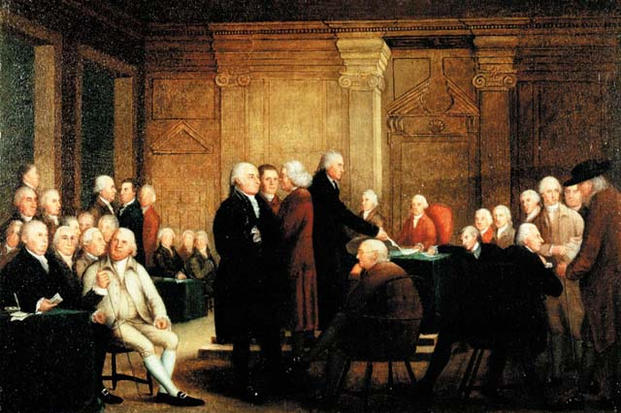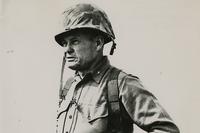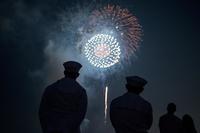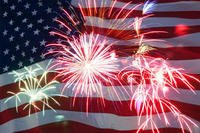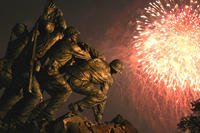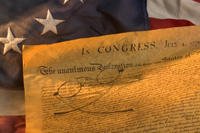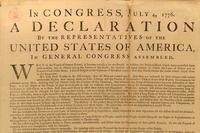1761 -- In 1761, fifteen years before the United States of America burst onto the world stage with the Declaration of Independence, the American colonists were loyal British subjects who celebrated the coronation of their new King, George III. The colonies that stretched from present-day Maine to Georgia were distinctly English in character although they had been settled by Scots, Welsh, Irish, Dutch, Swedes, Finns, Africans, French, Germans, and Swiss, as well as English.
As English men and women, the American colonists were heirs to the thirteenth-century English document, the Magna Carta, which established the principles that no one is above the law (not even the King), and that no one can take away certain rights. So in 1763, when the King began to assert his authority over the colonies to make them share the cost of the Seven Years' War England had just fought and won, the English colonists protested by invoking their rights as free men and loyal subjects. It was only after a decade of repeated efforts on the part of the colonists to defend their rights that they resorted to armed conflict and, eventually, to the unthinkable–separation from the motherland.
1774 -- The sole governing authority presiding over the tumultuous events of the American Revolution between 1774 and 1789 was a body known as Congress. With no power to regulate commerce or lay taxes, and with little ability to enforce any of its decisions, this group, representing the thirteen colonies, declared independence, conducted a war that defeated one of the greatest military powers of its day, and invented a new political entity that became a sovereign independent nation. Its members pondered everything from the rightness of independence to the number of flints needed by the armies–sometimes with the enemy not far from their doorstep. Asserting their rights, they found themselves labeled as traitors.
The fifty-four men who composed the First Continental Congress represented different interests, religions, and regions; they held conflicting opinions as to how best restore their rights. Most did not know each other; some did not like each other. With no history of successful cooperation, they struggled to overcome their differences and, without any way of knowing if the future held success or nooses for them all, they started down a long and perilous road toward independence.
1776 -- In June 1776, as Thomas Jefferson composed a draft of the Declaration of Independence from a second floor parlor of a bricklayer's house in Philadelphia, the largest invasion force in British military history was headed for New York Harbor. By the time the last of the fifty-six signers had affixed their names to the final, edited document months later, an invading force of British soldiers had landed at Staten Island, the British had taken New York City, and the American patriots had committed themselves to a long and bloody struggle for liberty and independence.
The Declaration announced to the world the separation of the thirteen colonies from Great Britain and the establishment of the United States of America. It explained the causes of this radical move with a long list of charges against the King. In justifying the Revolution, it asserted a universal truth about human rights in words that have inspired downtrodden people through the ages and throughout the world to rise up against their oppressors.
Jefferson was not aiming at originality. The Declaration articulates the highest ideals of the Revolution, beliefs in liberty, equality, and the right to self-determination. Americans embraced a view of the world in which a person's position was determined, not by birth, rank, or title, but by talent, ability, and enterprise. It was a widely held view, circulated in newspapers, pamphlets, sermons, and schoolbooks; but it was Thomas Jefferson, the 33-year-old planter from Virginia, who put the immortal words to it.
On July 4, 1776, Congress completed its editing of the document that reduced the text by 25 percent ("mutilations" is what Jefferson called it) and formally adopted the Declaration; on July 19, Congress ordered that a formal copy of the Declaration be prepared for members to sign; and on August 2, the final parchment–the one presently displayed in the nearby case–was presented to Congress and the signing began.
Want to Know More About the Military?
Be sure to get the latest news about the U.S. military, as well as critical info about how to join and all the benefits of service. Subscribe to Military.com and receive customized updates delivered straight to your inbox.
